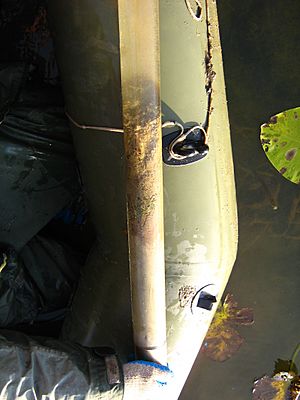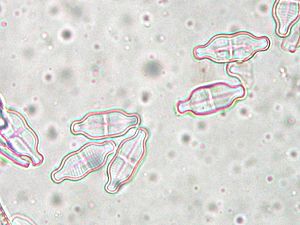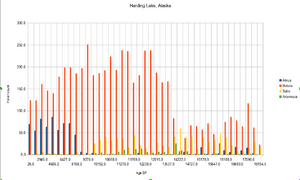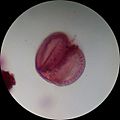Palynology facts for kids
Palynology is the study of tiny natural particles. The word itself means "study of dust." A palynologist is a scientist who identifies these particles. They can find samples of these tiny bits in air, water, soil, or rocks. These particles can be either organic (from living things) or inorganic (not from living things). Micropaleontology is a similar field that studies very small fossils.
How Palynologists Study Particles
Palynologists use a microscope to look at the tiny particles. They might also use chemical tests to figure out what a particle is made of.
The ways they study particles can be different from how micropaleontologists study tiny fossils. Micropaleontology often involves breaking and dissolving rocks. Palynology usually focuses on samples from soil or sediment.
The main job of a palynologist is to identify each particle. Many different kinds of particles can be found in one sample. These might include:
- clay
- pollen
- algae with hard shells, like diatoms, dinoflagellates, or golden algae
- spores from plants, fungi, or bacteria
- small seeds
- tiny pieces of larger organisms
- very small fossils
What Palynology is Used For

When a palynologist knows what particles are in a sample, they can learn a lot. They might be able to tell what the temperature was like where the sample came from. They can also figure out the environmental chemistry of that place. Sometimes, they can even tell exactly where the sample originated.
Palynology is used in forensic science (solving crimes). Scientists can look at particles found on or in something to learn where it came from. This can help investigators.
Palynology is also very important for studying climate history. In places like lakes, ponds, and the ocean, sediment slowly builds up. The oldest layers of sediment are always at the bottom. Scientists have special ways to take samples of this sediment without mixing up the layers. They might use a tube or even freeze the sediment.
In glacial lakes, the sediment can have varves. These are two layers per year that have different colors. If varves are present, scientists can find out very detailed information from a sediment sample.
Images for kids
-
A late Silurian sporangium bearing trilete spores. These spores are the earliest proof of life on land. Green: A spore tetrad. Blue: A spore showing a trilete mark – a Y-shaped scar. The spores are about 30–35 μm across.
See also
 In Spanish: Palinología para niños
In Spanish: Palinología para niños






